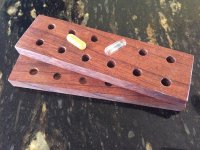Turmeric, a flowering plant of the ginger family, has long been prized in Ayurvedic medicine for its anti-inflammatory properties and in Asian cuisines for its earthy flavour and vibrant hue. Haldi, the spice’s Hindi name, is derived from the Sanskrit for “golden coloured”. But for the millions of South Asians who habitually consume it, turmeric’s skin-staining yellowness can be deceptive and deadly.
To heighten their colour, the rhizomes from which the spice is extracted are routinely dusted with lead chromate, a neurotoxin. The practice helps explain why South Asia has the highest rates of lead poisoning in the world. The heart and brain diseases it causes—to which children are especially susceptible—accounted for at least 1.4m deaths in the region in 2019. The economic cost is crippling; that year lead poisoning is estimated to have lowered South Asian productivity by the equivalent of 9% of GDP. Yet it turns out that with clever policies, enlightened leadership and astute messaging this blight can be greatly reduced. Bangladesh has shown how.
At the instigation of teams from Stanford University and the International Centre for Diarrhoeal Disease Research, Bangladesh, a research institute, the country launched a nationwide campaign against turmeric adulteration in 2019. Rules against adulteration were enforced and well-publicised stings carried out against wholesalers who persisted in it. The prime minister, Sheikh Hasina, discussed the problem on television. Bangladeshi bazaars were plastered with warnings against it. Local media also publicised it.
According to newly published data, the country thereby reduced the prevalence of turmeric adulteration in its spice markets to zero in just two years. That slashed lead levels in the blood of Bangladeshi turmeric-mill workers by about a third. ...

How to stop turmeric from killing people
Developing countries—especially India—should learn from Bangladesh
I don't always consume Tumeric, but when I do, I make sure it's sourced from Bangladesh. /Most interesting man in the world.

